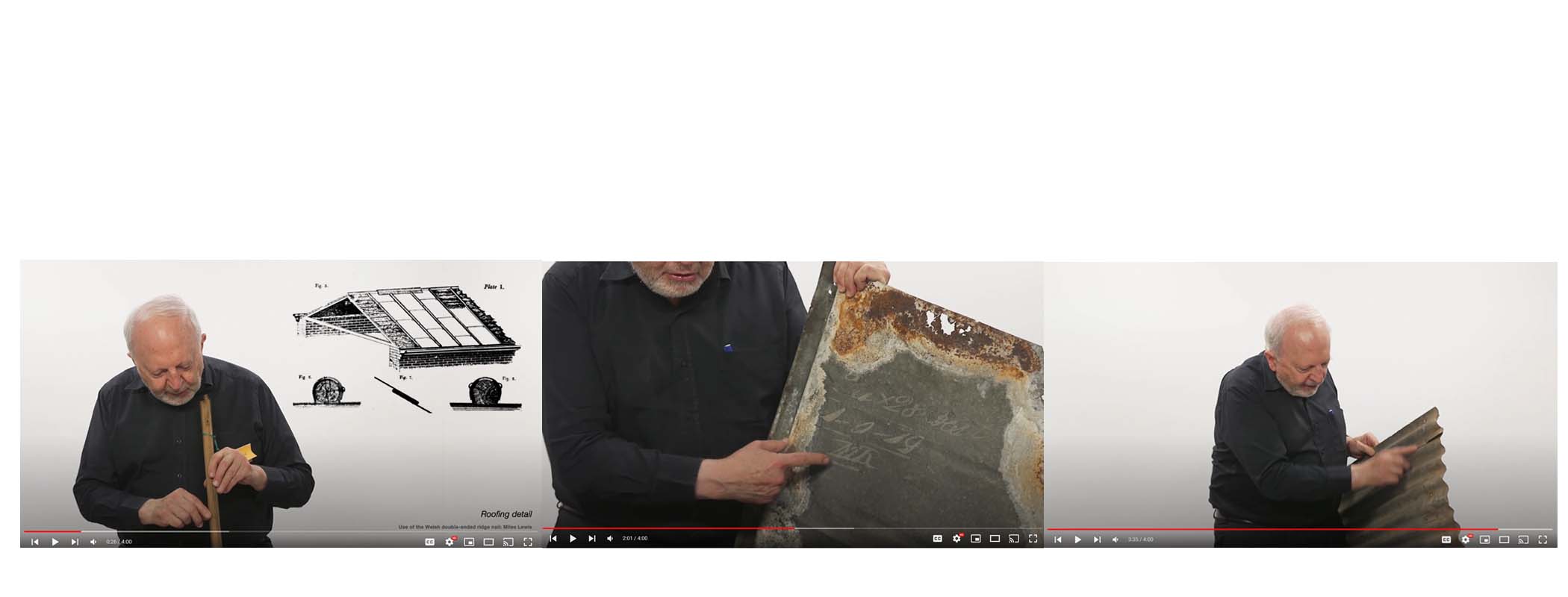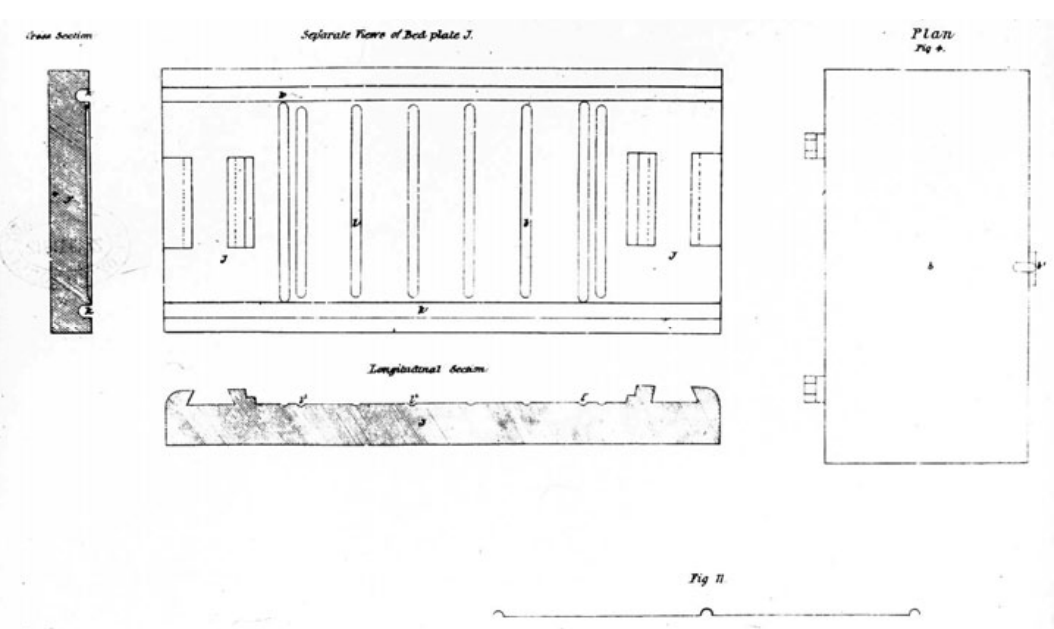Roofing Tiles

The types of roofing sheets and tiles, and the process of laying them out is discussed here.
Video Transcript
[Professor Miles Lewis]
Now to turn to roofing, traditional metal roofing and metal roofing in say lead or copper or zinc would have a complete surface of boarding like a floor put on the roof then the sheets are laid onto that. Where they join at the side the risk of water getting in.
Roofing of galvanised iron sheeting with standing seams on wood rolls 1
So, a timber piece, a timber roll would be put on as it's called, so this piece of timber here which has a curved top, would be on the roof nailed onto the boarding and the nail turned over the top of it, the next one turned over top as well, so the actual gap would be raised above the surface and water wouldn't get in.

Lysaght galvanised iron tile 2
So, when the first galvanized iron tiles were made they operated on the same principle the assumption was the same thing would be done, so although this is a late specimen this is what this is designed to do, that roll fits into the tile here and stops the water getting through.
Morewood & Rogers Iron Tile, Morewood & Rogers’s Victorian patent, moulds for pressing iron roofing tiles, 1857. 3
The next phase is the development of a complete system by Moores and Rogers who are galvanised iron manufacturers and this is a modern Rogers tile here, they tend to have that same feature but they also have ribs across the middle to make the middle rather stronger and what this means ribs across the middle here what this means is that you can actually dispense with the boarding below. This wasn't envisioned first at all so they get rid of the boarding and the tile is still sufficient spanning between the rafters. The early examples of these tiles often have lettering in what was originally red paint. It fades off here and it gives the size and the weight of the bundle of tiles, you bought the tiles by weight as you used to buy nails by weight not by not by number.
Morewood & Rogers stencilled Lettering; details of Morewood & Rogers tiles from the former stables, ‘Murndal’, Victoria, demolished 1950s. 4
So it gives those sizes, the bundle and then 'MR' which is Moore & Rogers, this is painted by hand by them by the warehousemen in England and you find them in rooms all over Australia in the same handwriting, this would be about 1850 to 1854 or so after that Moores & Rogers then turned to a more modern method, you have a stencilled brand on and these sizes are sold by number rather than by weight.
Just after this, you get the development of corrugated iron roofing and there are a whole range of varieties of corrugated iron roofing and often they can be identified by brands on the back of them and there's a complete catalogue of brands which operate for all the really all the English-speaking world although the irony itself is, all made in Britain.
Now corrugated iron is galvanized, as those tiles were said that has a layer of zinc on the surface or sometimes a layer of tin first and then a layer of zinc it doesn't, It's not a much real consequence. In the early phases of corrugated iron you get different varieties and this which looks like a sheet of small corrugations, the typical one is 75 mm or 3 inches, this is smaller, this has little straps, which are riveted to the back of the sheet. We have the remains of them here, there would have been three across here, and they're designed so that the next sheet slots into that gap.
Tupper Corrugated tile system 5
These are actually referred to as iron tiles or they look like corrugated iron there,they're described at the time as Tupper & Tile iron tiles. They were used in Australia around about the late 1850s to the mid 1860s.
Image & 3D model references:
1. Marshall Lefferts & Brother catalogue, New York, 1854.
2. Image by Restore Conservation Services.
3. Victorian patent no. 9 to Edmund Morewood & George Rogers, 18 March 1857.
4. Image by Miles Lewis
5. Diagram by Miles Lewis.



